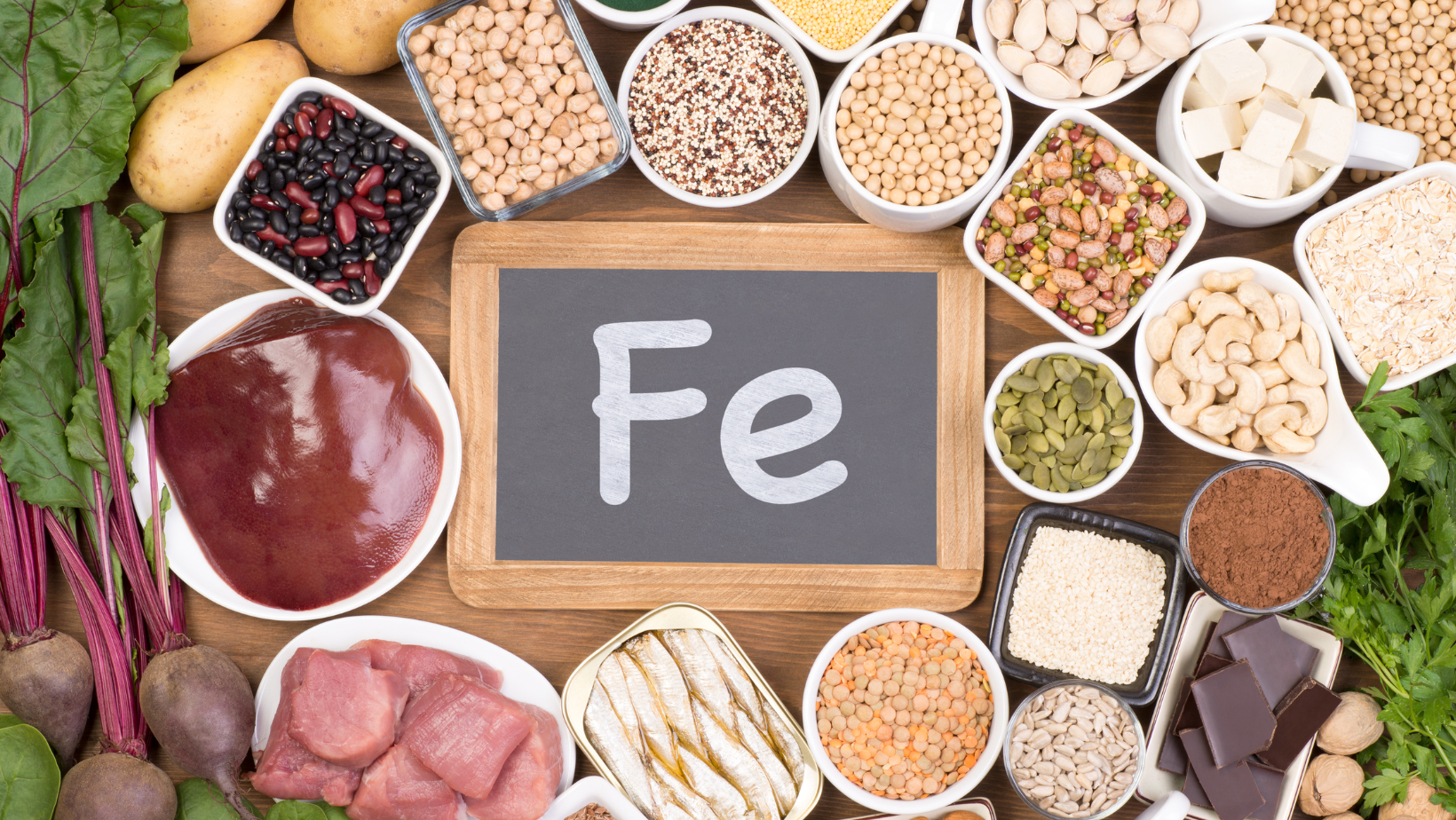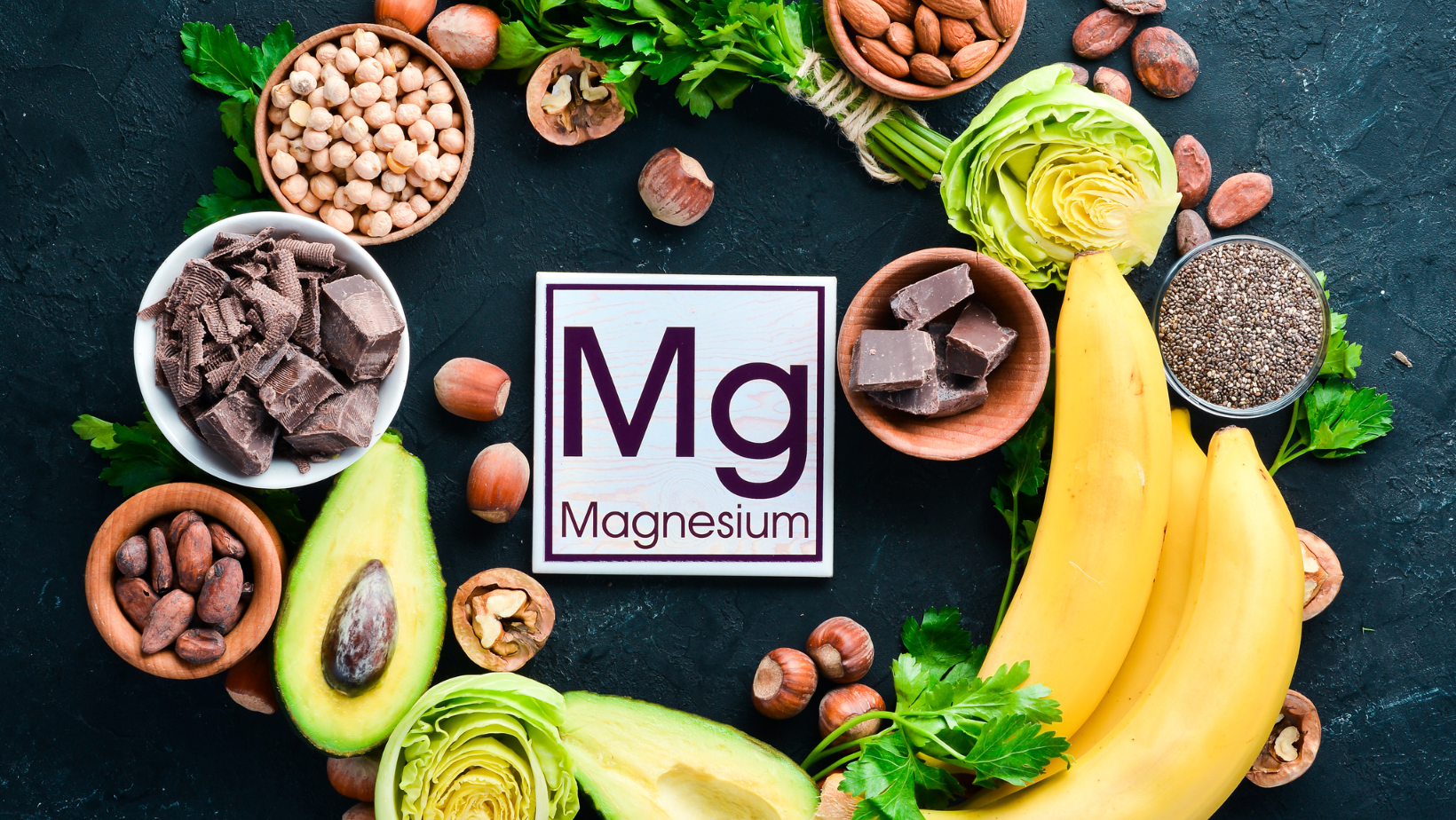Running on Empty: How Iron (and Ferritin) Fuel Your Body's Engine
Anna Harrelson • April 11, 2025
Why you might feel exhausted, foggy, or stuck—and what your "normal" labs might be missing.

You’re not crazy.
You’re not lazy.
And no, you’re not just "getting older."
If you’re dragging through your days, feeling foggy, heavy, or worn out—but your labs are "normal"—you’re not alone. One of the most overlooked causes I find in my practice is suboptimal ferritin levels.
Let’s break it down—with science, a little wit, and a whole lot of hope.
Your Body: A High-Performance Machine
Imagine your body like a beautifully engineered, high-performance car.
- Hormones are your spark plugs.
- Micronutrients are your engine oil.
- Proteins are your gears and pulleys.
Without the right balance of all these building blocks, the engine sputters. It doesn’t matter how good the outside looks—if you're low on fuel or missing key fluids, you’re not getting out of the driveway.
And iron —stored as ferritin—is a huge part of that fuel system.
What Is Ferritin, and Why Should You Care?
Ferritin is your body's iron storage protein. It’s like your gas tank. Not your current speed, not your miles per gallon—your actual reserve of fuel.
- Iron is essential for carrying oxygen to every cell in your body.
- It's crucial for energy production (ATP) in your mitochondria.
- It supports your thyroid, neurotransmitter function, hair growth, immune system, and even mood.
If you’re low on ferritin, you might still show "normal" hemoglobin or hematocrit—so traditional screening won’t catch it until you’re running on fumes.
Symptoms of suboptimal ferritin can include:
- Fatigue and poor exercise tolerance
- Brain fog or poor concentration
- Mood swings or low mood
- Headaches
- Hair shedding
- Shortness of breath with minimal exertion
- Restless legs or poor sleep
Sound familiar?
But My Labs Say I'm Normal...
Here's the kicker: most lab ranges are designed to flag anemia — not optimal function.
You could have a ferritin of 12 and be told "everything looks fine" — but feel absolutely awful.
For most women, especially those who are still menstruating or recently stopped, ferritin levels under 40–60 ng/mL can cause symptoms. Many functional and integrative medicine specialists aim for 70–100+ ng/mL to support optimal energy, cognition, and hair health.
Low-normal is not optimal.
When your engine light is blinking, topping off the tank halfway doesn’t cut it.
Why You Might Be Low
- Menstruation: Every period can deplete iron stores, especially if cycles were heavy.
- Pregnancy and postpartum: Even years later, many women never rebuild their iron stores.
- Gut health issues: Poor absorption due to low stomach acid, celiac disease, or IBS.
- Dietary patterns: Plant-based diets can be low in easily absorbed heme iron.
- Chronic inflammation: Inflammatory signals can "hide" your iron from circulation.
Food First, But Realistic
Yes, food matters. Red meat, poultry, seafood, lentils, spinach, and pumpkin seeds all contribute iron.
But rebuilding storage? That’s a bigger lift.
Think of dietary iron like filling up your gas tank 10–15% at a time. Helpful, but slow if you're starting on empty. Sometimes you need a boost.
That’s where targeted supplementation can help—whether it’s gentle oral iron (like iron bisglycinate) or occasional intravenous iron if needed.
And by the way, ever wonder why "senior" vitamins have no iron? Because postmenopausal women typically don’t lose blood monthly.
We don’t want too much iron. But we also can’t function with too little. Balance is everything.
Final Thoughts
If you’re feeling run down, foggy, achy, or unlike yourself—it’s not "all in your head."
Your body is whispering (or screaming) for better support. And sometimes the missing piece isn’t fancy. It’s basic, foundational, and fixable.
Ferritin matters.
Iron matters.
You matter.
At Wondercreek Health, I believe in digging deeper, connecting the dots, and helping you rebuild the strong, steady foundation your body deserves.
Because you weren’t designed to run on empty.
Iron-Rich Foods to Boost Your Levels
- Beef, lamb, liver (heme iron is best absorbed)
- Dark poultry (chicken thighs, turkey)
- Shellfish (clams, oysters, mussels)
- Lentils and chickpeas
- Spinach and swiss chard
- Pumpkin seeds and cashews
- Fortified cereals and oatmeal
- Tofu and tempeh
Ferritin Target Chart
Ferritin Level
What It Means
<15 ng/mL
Severe deficiency
15–40 ng/mL
Low stores (symptoms likely)
40–60 ng/mL
Borderline (may still have symptoms)
70–100+ ng/mL
Optimal for energy, cognition, hair health
Individual needs vary—always interpret ferritin in the context of your full health picture!
When to Suspect Low Iron
- Feeling tired despite good sleep
- Exercise feels harder than it used to
- Brain fog or poor memory
- Unexplained hair thinning
- Pale skin or brittle nails
- Frequent headaches
- Restless legs or poor sleep
- Shortness of breath climbing stairs
If you’re nodding along to several of these, it’s worth a closer look at your ferritin levels.
WonderCreek Health Blog

Many of the women who find their way to me share a common story: They’ve seen multiple specialists. Their labs are “normal.” Their symptoms are scattered across systems—joints, gut, mood, hormones, skin—and yet every provider focuses on one piece at a time, never the whole picture. They’ve often been told they’re anxious, dramatic, or “too sensitive.” And yet, they’re also some of the most intuitive, self-aware, and relentlessly curious patients I’ve ever met. They know their bodies. They know something isn’t right. And they won’t stop searching until someone finally sits down and helps them connect the dots. That’s where connective tissue disorders come in. What Do We Mean by “Connective Tissue Disorders”? When I talk about this group of conditions, I’m referring to women who often fall somewhere on the spectrum of: Hypermobility spectrum disorder (HSD) Ehlers-Danlos features Mast cell activation (MCAS) Endometriosis PMDD and other hormone sensitivities POTS or other dysautonomias The common thread? Their connective tissue is different—looser, more fragile, more reactive. And when the scaffolding of the body isn’t as stable, symptoms spill over into every system: joints, vessels, immune response, mood, hormones, digestion, even the brain. Why Midlife Feels Like a Breaking Point Estrogen has always been a stabilizer. It strengthens collagen, calms mast cells, and helps buffer the nervous system. So, it’s no surprise that perimenopause—when estrogen begins to fluctuate dramatically—can feel like the rug is being pulled out. I see women who: Once held things together with sheer willpower Managed PMDD, migraines, or endometriosis in their younger years Suddenly feel like everything has intensified: joint pain, bloating, histamine reactions, mood shifts, insomnia, brain fog For women with sensitive connective tissue and sensitive nervous systems, hormonal shifts don’t just cause hot flashes—they destabilize the entire body. Hormone Therapy for the Orchid Patient Many of my patients have tried hormones before. Sometimes birth control left them moody, swollen, or miserable. Sometimes a patch or pill was prescribed quickly, with no attention to how sensitive their system might be. So when they hear “hormone therapy,” they’re understandably hesitant. This is where my orchid theory comes in. Orchids are not weak flowers—they’re strong, beautiful, and resilient. But they need careful tending. They don’t thrive when thrown into the same soil or light as every other plant. They require patience, precision, and a slower hand. My connective tissue–sensitive patients are orchids. Their bodies respond to hormone therapy, but they need a methodical, gentle approach: Always bioidentical hormones Introduced slowly, step by step Carefully monitored, with adjustments made gradually Combined with lifestyle strategies to support the nervous system and reduce inflammation This is not a “one patch fits all” process. It’s a partnership. And when done thoughtfully, hormone therapy can bring profound relief and stability. Why Sensitivity Is a Strength The women I see are often neurodivergent—ADHD, autistic traits, or simply highly perceptive. They’re often told their sensitivity is a liability, but I see it differently. That very sensitivity is what helps them notice patterns others miss. It’s what fuels their curiosity to keep searching, even after being dismissed. Their intuition about their own bodies is spot on. Yes, their connective tissue is different. Yes, their mast cells fire more easily. Yes, their hormones seem to create more chaos. But these women are also some of the most resilient, resourceful, and insightful people I know. Moving Forward If you see yourself in this description, please know: You’re not “too sensitive.” You don’t have 27 different diagnoses—you have a pattern that makes sense. Hormones are not off the table for you—they may just need to be approached differently. Your lived experience matters as much as your lab results. This isn’t about fixing you—you are not broken. It’s about giving your body the tailored support it’s been asking for all along. This is just the beginning of a series I’ll be writing on connective tissue–related conditions: MCAS, PMDD, endometriosis, and more. Each deserves its own spotlight. But the first step is recognition. You deserve to be seen in your wholeness—not dismissed as “normal” when everything in your body is telling you otherwise.

You know how people say, "Just drink some water and take a magnesium supplement" like it’s the answer to everything? Well… they’re not totally wrong. But like most good advice, the devil is in the details. Magnesium is one of the most essential minerals in the body, involved in over 300 enzymatic reactions , yet it remains one of the most commonly overlooked deficiencies in midlife women. And no, your annual bloodwork probably didn’t catch it. So What Does Magnesium Actually Do? Think of magnesium as a multitasking background assistant—it keeps the lights on and the gears turning across nearly every body system: Brain & Mood: Regulates GABA and NMDA receptors, supporting calm, focus, and resilience against anxiety and overstimulation. Muscles: Prevents cramping and twitching, supports strength and recovery, and reduces restless legs. Sleep: Plays a role in melatonin production and nervous system regulation. Bowel Function: Helps pull water into the colon to prevent constipation. Cardiovascular Health: Regulates blood pressure and helps with vasodilation. Hormone Balance: Assists in estrogen metabolism and combats insulin resistance. In short: if you’re exhausted, bloated, moody, foggy, tense, or irregular in your gut or cycle—magnesium deserves a spot on your radar. Why Is Magnesium So Important in Midlife? Estrogen and progesterone both influence magnesium levels. As hormone levels decline or fluctuate during perimenopause and menopause, so does your ability to retain and utilize magnesium. Add to that: Chronic stress (which depletes magnesium) Modern diets (often low in magnesium-rich whole foods) Medications like PPIs, diuretics, or certain antibiotics High caffeine, sugar, or alcohol intake (all increase magnesium excretion) And suddenly, a " borderline magnesium issue " becomes a perfect storm. Why Your Blood Test Might Not Show It Serum magnesium tests only reflect ~1% of total body magnesium. Most magnesium is stored in bone and tissue. So it’s very possible to have "normal labs" and still be clinically deficient. In practice, we go by symptoms, risk factors, and therapeutic response. Common Signs of Suboptimal Magnesium Trouble falling or staying asleep Anxiety or nervous system overactivation Fatigue or burnout that doesn’t resolve with rest Muscle cramps, spasms, or eye twitches Constipation Menstrual migraines or tension headaches Joint stiffness or tightness Sugar cravings or blood sugar crashes Best Food Sources of Magnesium Magnesium-rich foods include: Dark leafy greens (spinach, chard) Nuts and seeds (especially pumpkin seeds and almonds) Avocados Legumes Dark chocolate (yes, really!) Whole grains like quinoa and oats That said, many of us still fall short even with a healthy diet, especially during high-stress seasons or if absorption is impaired. Supplements: Which Type of Magnesium Is Best? Not all magnesium is created equal. Here are the forms we most often recommend: Magnesium Glycinate: Best for sleep, anxiety, and muscle relaxation. Gentle on the stomach.** Magnesium Citrate: Useful for constipation, but can cause loose stools at higher doses. Magnesium Threonate: May support cognitive function and brain health. Magnesium Malate: Good for energy and muscle pain, often used in fibromyalgia. We generally avoid magnesium oxide unless constipation is the only concern, as it’s poorly absorbed. **Mag Glycinate is generally my go to recommendation and what we take at our house Also, BLENDS can be good- but generally more expensive Dosing & Timing Most women benefit from 200–400 mg daily, depending on needs. Take it in the evening if you're targeting sleep or relaxation. Divide doses if taking more than 300 mg (e.g. AM + PM). Always start low and go slow, especially with citrate forms to avoid urgent bathroom visits. Final Thoughts If magnesium had better marketing, it would be a top-tier wellness darling. But because it’s quiet, essential, and boring on paper, we tend to overlook it. Yet for so many midlife women, magnesium is the missing link that helps all the other systems and strategies finally click. So if you're doing "everything right" and still feel off? It might be time to start taking magnesium!

